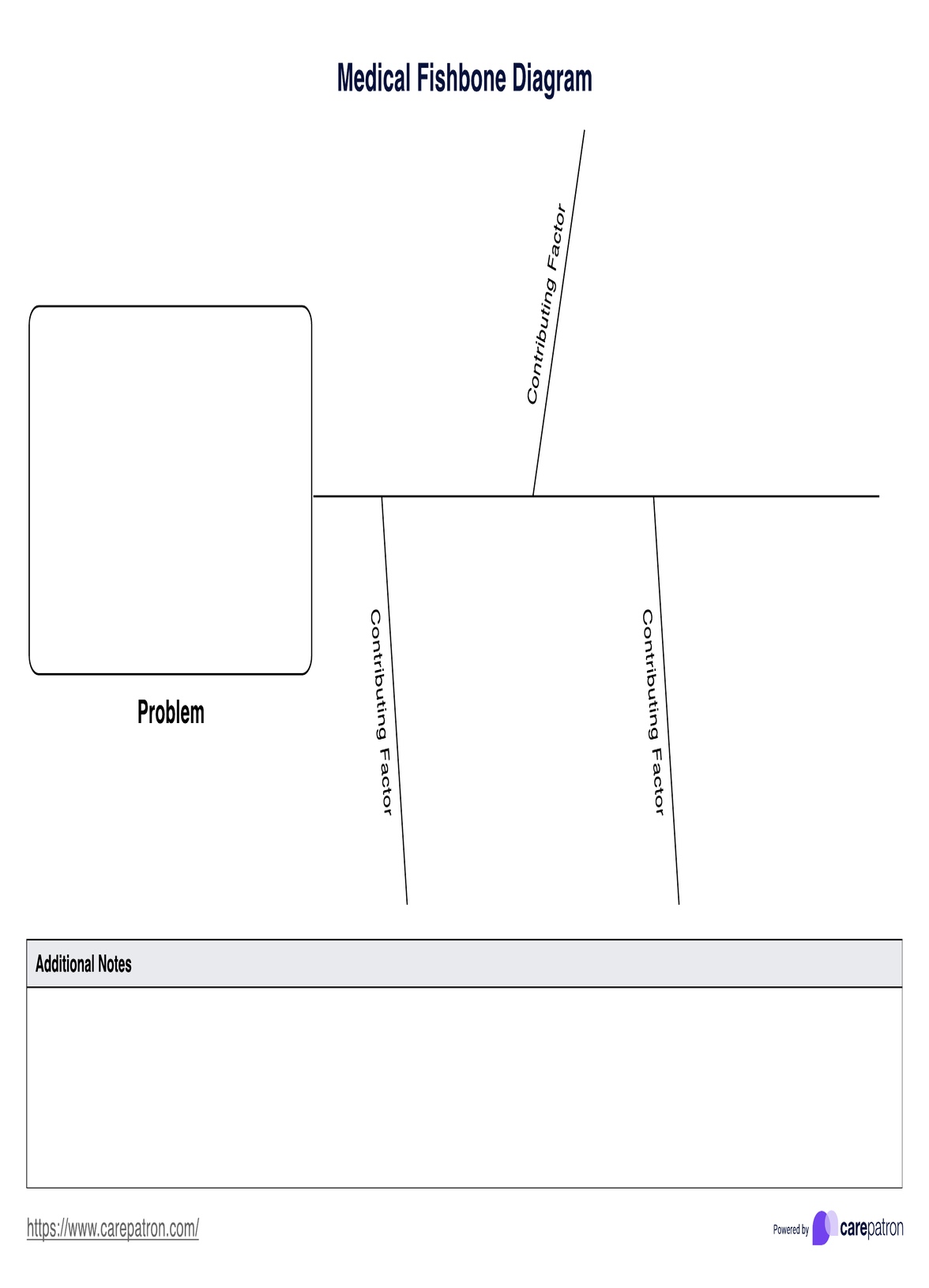By identifying the underlying causes of healthcare issues, Medical Fishbone Diagrams can help teams implement targeted solutions, ultimately improving patient care, quality management, and safety.

Medical Fishbone Diagram
Explore the Medical Fishbone Diagram to identify the causes of healthcare issues with our free PDF template. Streamline problem-solving in clinical settings.
Use Template
Medical Fishbone Diagram Template
Commonly asked questions
The main limitation of Medical Fishbone Diagrams is that they require accurate identification of causes and contributing factors, which can be challenging without sufficient data or if biases influence the analysis.
Yes! While they are instrumental in healthcare, Fishbone Diagrams can be adapted to analyze and solve problems in various fields such as business, engineering, and health care, research, and education.
EHR and practice management software
Get started for free
*No credit card required
Free
$0/usd
Unlimited clients
Telehealth
1GB of storage
Client portal text
Automated billing and online payments











